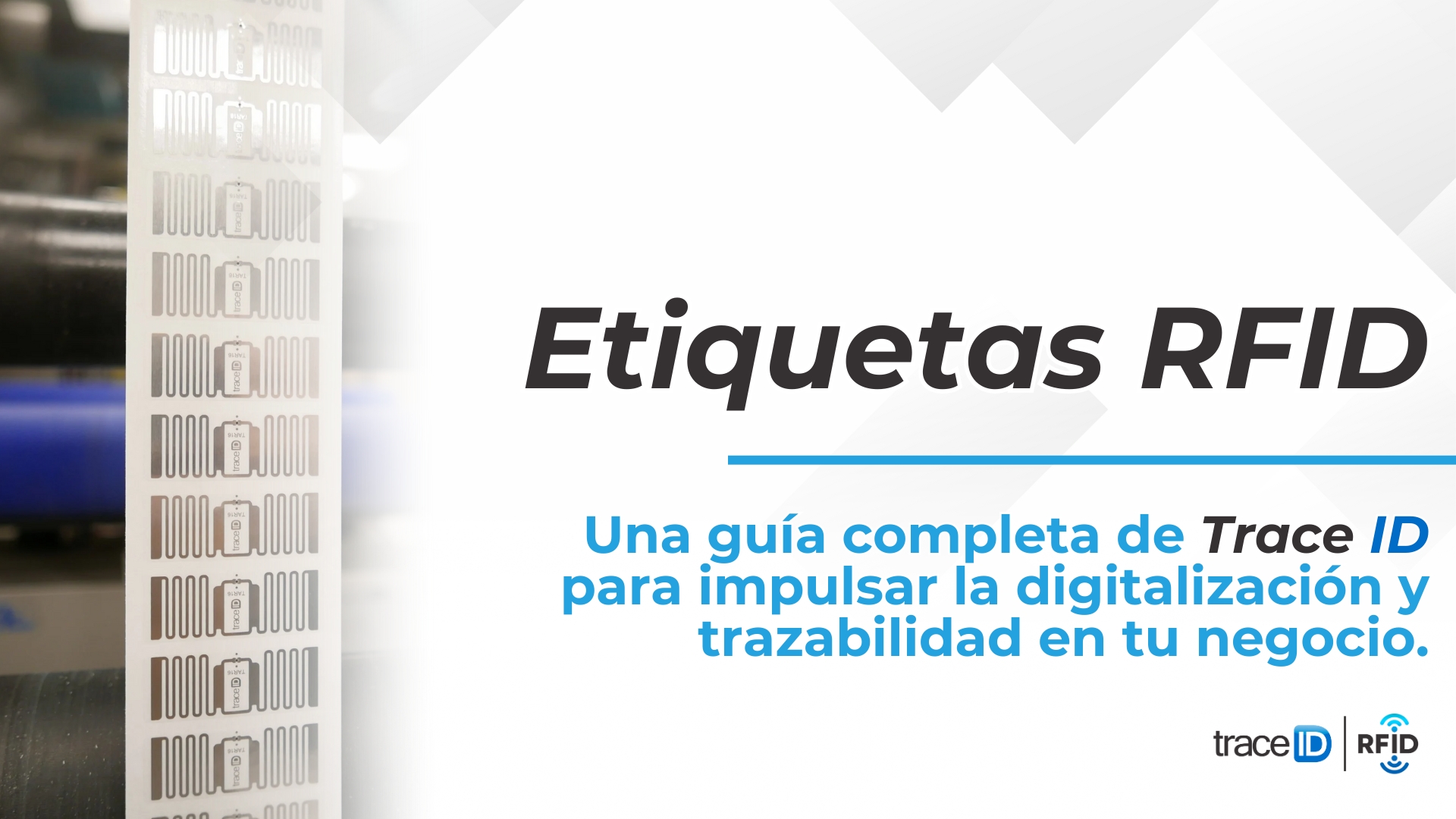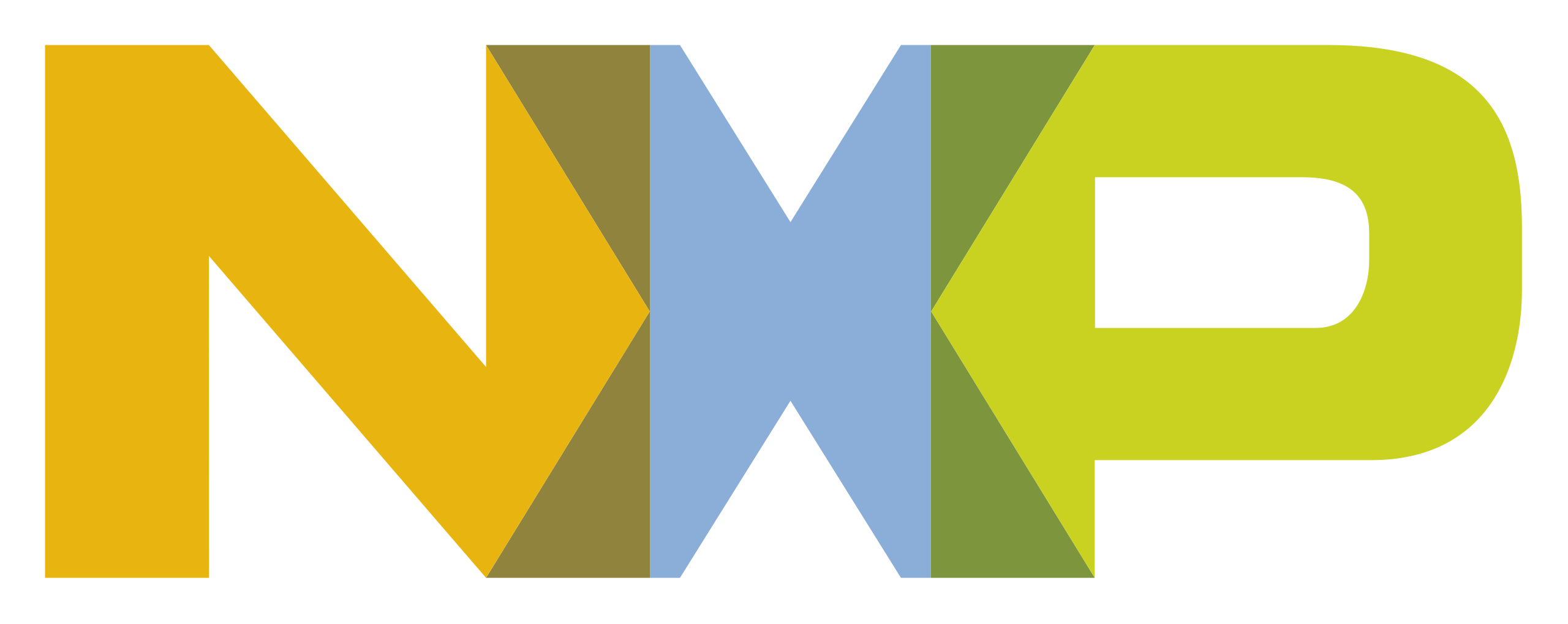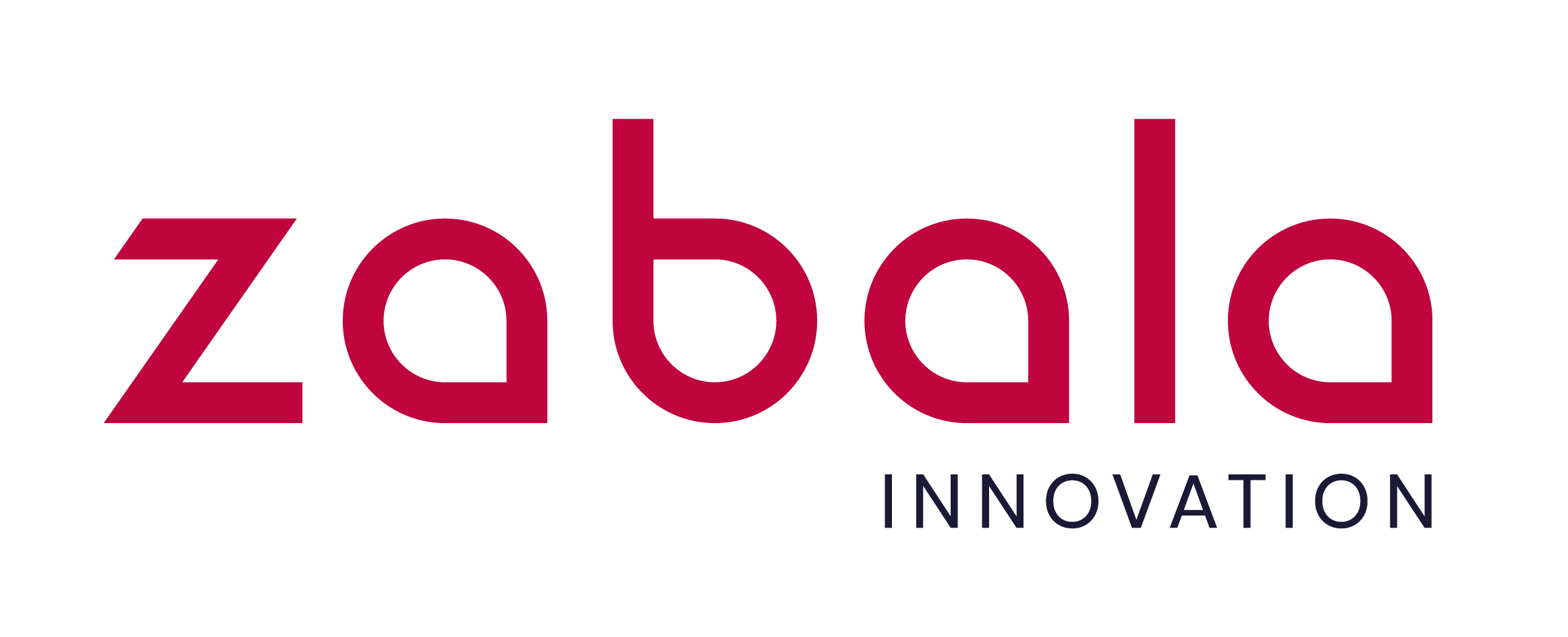RFID Tags: What They Are and What They Can Be Used For
Trace ID’s expert guide to transforming your processes with RFID technology.
In the digital age, RFID (Radio Frequency Identification) technology has become an essential tool for automation, inventory management and product traceability. With more than 10 years of experience in technology marketing and RFID solutions, Trace ID is at the forefront, offering high quality RFID tags developed using advanced bonding and converting processes. These techniques guarantee maximum durability and performance, ensuring that each tag is perfectly adapted to the demands of the environment in which it is used.
What is RFID Technology?
RFID technology enables the identification and tracking of objects without the need for physical contact or direct line of sight. This is achieved through wireless communication between a reader and an RFID tag, which contains a chip and an antenna. By transmitting information via radio waves, complete traceability along the supply chain, from raw material to the end consumer, is made possible. The digitisation and automation offered by RFID reduces errors, optimises processes and facilitates real-time decision making.
Fundamental Components of an RFID Tag
An RFID tag is made up of three essential elements, each optimised with bonding and converting processes to ensure quality and resilience:
RFID chip:
This is the “brain” of the tag. It stores data and manages communication with the reader. The chips can have different memory capacities and security levels, adapting to applications ranging from basic identification to high traceability and security systems.
Antenna:
Connected to the chip, the antenna captures the energy of the electromagnetic field emitted by the reader and transmits the signal. Thanks to advanced converting techniques, the antenna design is optimised to maximise range and efficiency, even in environments with electromagnetic interference or in the presence of metallic materials.
Substrate or Support Material:
This component binds and protects both the chip and the antenna. We use high-strength materials, subjected to rigorous bonding processes that ensure a solid and durable bond, even in extreme conditions such as industrial or cooling environments.
The perfect combination of these elements forms the RFID inlay, the technological core that enables accurate wireless communication and full traceability.
RFID Label Types
RFID tags are classified according to their power source and activation mode:
Passive Tags:
They have no internal battery and are activated by the energy of the electromagnetic field generated by the reader. They are ideal for short to medium range applications (up to 15 metres) and stand out for their low cost, being widely used in traceability systems in logistics and retail.
Active Tags:
They incorporate an internal battery that allows them to transmit signals continuously, reaching much greater reading ranges (up to 100 metres or more). They are ideal for real-time monitoring and control of assets in large infrastructures.
Semi-Active Tags (Semi-Passive):
Combine external signal activation with an internal battery that boosts the chip’s response. They offer a balance between cost and performance, providing greater accuracy in traceability systems without the high cost of active tags.
Bonding and Converting Processes: The Basis of RFID Label Quality
At Trace ID, our bonding and converting processes are fundamental to ensuring that every RFID tag meets the highest quality standards:
Bonding:
This process focuses on the perfect bond between the chip and antenna, ensuring a robust connection that withstands harsh conditions. Quality bonding is essential to avoid communication failures and ensure the integrity of the stored data.
Converting:
Refers to the transformation of raw materials into final products through cutting, laminating and printing techniques. Converting allows labels to be customised in terms of shape, size and design, adapting to the specific needs of each sector and application.
These processes not only optimise strength and durability, but also enable full customisation of RFID tags, expanding their applications in a variety of environments.
Featured RFID Technology Applications
The versatility of RFID technology and the quality of RFID tags enable their application in a wide range of industries. Some of the most prominent applications are detailed below, with a full development and definition of each:
1. Supply Chain Management
Definition and Benefits:
The integration of RFID tags in each product or component enables full traceability along the entire supply chain. From the input of raw materials to the output of the final product, every movement is recorded in real time.
Practical Application:
Inventory Control: Automates stock updates and reduces manual errors.
Logistics Optimisation: Facilitates the location and tracking of goods, reducing waiting times and improving efficiency in transport and storage.
Real-Time Visibility: Allows companies to make informed decisions based on accurate, instantly updated data.
2. Industry and Manufacturing
Definition and Benefits:
In industrial sectors, RFID allows components to be identified and tracked throughout the production process. This results in improved quality control and optimisation of the assembly line.
Practical application:
Process Control: RFID tags facilitate the tracking of parts and equipment, ensuring that each component meets quality standards.
Predictive Maintenance: They allow the recording of wear and tear cycles, helping to schedule preventive maintenance and avoid unexpected stoppages.
Integration with ERP systems: They improve synchronisation between production and business management, optimising planning and workflow.
3. Logistics and Warehousing
Definition and Benefits:
The implementation of RFID tags in warehouses allows the simultaneous reading of multiple products, updating in real time the location and status of each item.
Practical Application:
Space Optimisation: Allows for more efficient inventory management, facilitating the location of products and reducing order preparation times.
Error Reduction: Automation minimises human intervention, reducing the possibility of errors in inventory management.
Environmental Condition Tracking: In sensitive applications, sensors can be incorporated to monitor conditions such as temperature and humidity, ensuring product integrity.
4. Retail and Inventory Management
Definition and Benefits:
The retail sector benefits greatly from RFID by enabling accurate and automated inventory control, improving the customer experience and reducing losses due to theft.
Practical Application:
Loss Prevention: Integrated anti-theft systems that detect and alert on unauthorised movements.
Enhanced Shopping Experience: Enables the implementation of smart fitting rooms and interactive displays that provide additional product information.
Efficient Stock Management: Ensures that stock is kept up to date, avoiding stock-outs and optimising product replenishment.
5. Healthcare and Pharmaceuticals
Definition and Benefits:
In hospitals, laboratories and pharmacies, RFID ensures traceability of medicines, equipment and patients, increasing safety and management efficiency.
Practical Application:
Medication Tracking: Allows the identification and control of batches, expiry dates and storage conditions.
Medical Equipment Management: Ensures that each device or instrument is available and in optimal conditions, facilitating maintenance and location.
Patient Monitoring: RFID wristbands allow precise tracking of the location and care provided to each patient, improving coordination and safety in the hospital environment.
6. Food and Beverage
Definition and Benefits:
Traceability is essential in the food industry to ensure product safety and quality. RFID tags make it possible to monitor every stage of the process, from production to distribution.
Practical application:
Quality Control: Facilitates tracking of critical processes, such as refrigeration or ripening time.
Regulatory Compliance: Ensures compliance with food safety regulations through detailed recording of each batch.
Alert Management: Allows automatic alerts to be set up in the event of any anomaly in the production or storage process.
7. Libraries and Document Management
Definition and Benefits:
The implementation of RFID in libraries and document management systems automates the lending and return of books and documents, reducing time and improving security.
Practical Application:
Loan Automation: Facilitates the control of the inventory of books and documents, allowing a more agile and accurate management.
Document security: Protects valuable documents through tracking systems that prevent loss and theft.
Space Optimisation: Improves the organisation and location of materials, facilitating access to information.
8. Sports Events and Timing
Definition and Benefits:
In sports, RFID tags are integrated into bibs, wristbands or shoes to accurately measure times and distances, providing real-time data.
Practical Application:
Accurate Timing: Allows participants’ times to be recorded without interference, ensuring accurate results.
Real-Time Tracking: Facilitates data visualisation during the event, enhancing the experience for both athletes and the public.
Performance Analysis: Provides detailed data to evaluate and improve athlete performance.
9. Asset Tracking
Definition and Benefits:
RFID is used to locate and track assets in real time, reducing losses and facilitating the management of equipment and machinery.
Practical Application:
Integrated Asset Management: Each piece of equipment or machinery is identified with an RFID tag, allowing precise control of its location and status.
Preventive Maintenance: Continuous monitoring helps to schedule maintenance and reduce operational failures.
Resource Optimisation: Improves inventory management and reduces costs associated with loss and theft.
Conclusion
RFID technology and RFID tags have established themselves as essential elements in achieving complete traceability and process automation in numerous sectors. Thanks to the advanced bonding and converting processes implemented by Trace ID, our tags offer the highest quality, durability and accuracy, allowing companies to optimise their operations, reduce costs and improve efficiency in real time.
If you are looking to transform your processes and achieve seamless traceability in your supply chain, we invite you to learn more about our solutions at www.trace-id.com. Discover how RFID technology, coupled with high-precision bonding and converting processes, can make a difference to your business.
Contact us for more information focused on your needs. If you wish to receive information about RFID technology, subscribe to our magazine.






